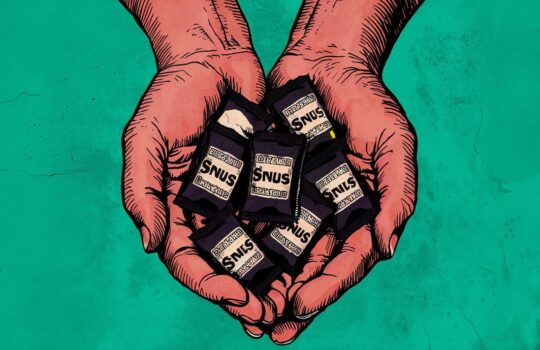Unveiling the Dynamics of Cigarette Pricing in British Columbia


In the picturesque province of British Columbia, where natural beauty meets urban vibrancy, discussions around the cost of living often take center stage, and cigarette prices are no exception. Delving into the realm of tobacco sales in BC, it becomes evident that numerous factors intertwine to shape the pricing landscape of cigarettes. This article, “Smoke Signals: Understanding Cigarette Pricing Trends in BC,” aims to provide readers with a nuanced understanding of the complexities underlying cigarette pricing in the region, offering a detailed exploration of the forces driving costs within this unique market.
Cigarette prices in British Columbia transcend mere corporate decisions, heavily influenced by a web of provincial and federal taxes crafted to deter smoking for the betterment of public health. These levies, coupled with regulatory frameworks and policies, exert a significant influence on the retail pricing of cigarettes, positioning BC among the provinces with the highest cigarette prices in Canada. The rationale behind these elevated costs is multifaceted, encompassing not only public health imperatives but also governmental revenue strategies and initiatives aimed at curbing the environmental impact of discarded cigarette butts.
As we embark on an examination of historical trends, present realities, and future projections regarding cigarette prices in BC, this article endeavors to offer a comprehensive grasp of the underlying dynamics. From tax escalations and anti-smoking initiatives to the prevalence of black market activities and cross-border shopping, each facet unveils unique insights into the intricate tapestry of cigarette pricing. Whether you’re a smoker grappling with the financial implications of escalating costs, a policymaker charting the course for tobacco control measures, or simply intrigued by the intersection of economics and public health, this exposé is crafted to illuminate the multifaceted realm of cigarette pricing in British Columbia.
Pricing Dynamics in British Columbia: Unraveling the Complexity
The realm of cigarette pricing in British Columbia transcends conventional market forces, delving into a labyrinth of intricate factors shaping consumer costs. At its core lie the formidable impositions of both provincial and federal taxes, exerting substantial sway over the final retail price tag. Delving into these layers unveils not only the economic underpinnings of cigarette pricing but also the profound implications for public health and regulatory agendas.
Taxation Terrain: A Prime Mover of Prices
In the landscape of British Columbia, the price of a cigarette pack bears the weight of hefty taxes, stemming from both federal excise duties and provincial levies. Under federal jurisdiction, excise duties levied on every tobacco product, including cigarettes, undergo annual adjustments to accommodate inflation. Concurrently, BC enforces additional taxes, strategically positioned to dissuade smoking by elevating costs. This tax burden serves as a significant contributor to the province’s elevated cigarette prices, mirroring the broader societal toll of smoking through healthcare expenses tethered to smoking-related ailments.

Navigating Regulatory Influences on Pricing
In the intricate dance of determining cigarette prices, regulatory measures emerge as pivotal players, wielding significant influence alongside taxation dynamics. From constraints on advertising and packaging to delineations on sales outlets, these regulations subtly shape costs by sculpting market accessibility and fostering competitive environments. Furthermore, British Columbia’s regulatory framework extends to mandates dictating minimum price thresholds for tobacco products, safeguarding against price erosion and potential affordability pitfalls that could render cigarettes more accessible to vulnerable consumer segments.
Supply Chain Dynamics and Retail Markup: Unveiling the Layers of Cost
Beyond the regulatory realm, the journey of a cigarette from production to retail unfolds against the backdrop of supply chain intricacies and retail markups, each layer contributing to the final price tag. Importers, wholesalers, and retailers navigate a web of logistical considerations, storage expenses, and profit margins, each step adding a nuanced dimension to the cost structure. Retailers, attuned to market nuances and demographic preferences, may tailor their markups based on location and competitive forces, further shaping the retail landscape and influencing consumer access to cigarettes.
Unraveling the Impact of Smuggling and Illicit Trade
In the intricate tapestry of cigarette pricing in British Columbia, the specter of smuggling and illicit trade casts a shadow, exerting indirect yet palpable effects on consumer costs. Driven by the allure of evading high taxes and stringent regulations, illicit sales channels offer cigarettes sans taxation, siphoning revenues from government coffers and distorting market dynamics. This illicit undercurrent not only poses fiscal challenges but also undermines pricing structures and imperils public health imperatives. Despite concerted efforts by authorities to stem this tide, the persistence of illicit trade underscores the intricate web of challenges encircling cigarette pricing.
Indeed, the pricing landscape of cigarettes in British Columbia emerges as a multifaceted tableau, woven from the threads of taxation, regulatory frameworks, supply chain dynamics, and the enduring battle against illicit trade. Each strand intertwines to sculpt the lofty costs borne by consumers, embodying a strategic endeavor to curtail smoking rates while navigating the delicate balance between economic viability and public health imperatives. As we chart our course forward, a nuanced comprehension of these elements becomes indispensable for those seeking to navigate the labyrinthine realm of cigarette pricing in BC.
Tracing the Historical Trajectory of Cigarette Prices in BC
The narrative of cigarette pricing in British Columbia unfolds as a saga of incremental shifts, propelled by evolving governmental strategies, health advocacy endeavors, and economic undercurrents. Delving into these historical trends unveils the intricate tapestry of influences that have sculpted the province’s pricing landscape across the decades.
Early Regulatory Footprints: A Balancing Act
The annals of cigarette pricing in BC trace back to the late 20th century, a time when nascent governmental awareness of smoking’s public health ramifications began to take shape. Initially, taxes on cigarettes bore modest imprints, aiming to strike a delicate equilibrium between revenue generation and minimal disruption to consumer habits. However, as mounting evidence underscored smoking’s adverse health impacts, the province pivoted towards leveraging taxes as a deterrent measure.
The Ascendancy of Taxation: Paving the Way for Change
By the early 2000s, British Columbia, mirroring broader national trajectories, embarked on a trajectory of substantial tax hikes on tobacco products. These pivotal measures, emblematic of sweeping public health campaigns, sought to recalibrate smoking behaviors by rendering cigarettes less financially attainable, particularly among price-sensitive demographics, such as youth.
Navigating the Ripple Effects of Taxation
The reverberations of these tax escalations reverberated palpably across the pricing spectrum, ushering in a sustained ascent in cigarette prices over subsequent years. With each fiscal augmentation, retail prices mirrored an attendant surge, mirroring the direct pass-through of added costs onto consumers. Concurrently, this era witnessed the advent of targeted policy interventions aimed at further curtailing tobacco consumption, including stringent advertising regulations and curbs on public smoking, indirectly influencing pricing dynamics by curbing demand.
Towards a Present Paradigm: Dynamics of Stability
In more contemporary epochs, the cadence of price escalations has exhibited a semblance of stabilization, albeit with prices persistently outpacing inflation rates. This equilibrium, nuanced by the law of diminishing returns, reflects a point of diminishing efficacy in driving down smoking rates with escalating prices. Furthermore, governmental imperatives have necessitated a delicate balancing act between public health mandates and the lurking specters of smuggling and illicit trade, heightened by the allure of soaring legal market prices.
Retrospection as Prologue: Informing Future Trajectories
The retrospective lens cast upon BC’s cigarette pricing narrative unveils a cogent trend wherein pricing emerges as a pivotal instrument for advancing public health agendas. From embryonic phases to contemporary echelons of elevated prices, this trajectory mirrors an evolving cognizance of smoking’s true societal costs — both in terms of public health ramifications and economic burdens. Anchored in historical context, this narrative serves as a compass for deciphering current pricing paradigms and prognosticating future trajectories.
Assessing the Present Landscape of Cigarette Pricing in BC
In recent times, British Columbia finds itself entrenched in a trajectory marked by soaring cigarette prices, positioning it among the vanguard of provinces bearing the highest financial burdens for smokers across Canada. This segment delves into the multifaceted factors that underpin the current pricing milieu, encompassing taxation dynamics, the regional cost of living, and juxtapositions with peer provinces.
Taxation: The Keystone Factor
Undoubtedly, taxation emerges as the linchpin in sculpting cigarette prices in British Columbia. The amalgamation of federal excise duties and provincial levies channels a substantial share of the retail price into governmental coffers. These fiscal impositions, far from mere revenue generators, serve as formidable deterrents against smoking by rendering the habit financially prohibitive. The prevailing tax rates mirror the government’s unwavering commitment to public health through a fiscal lens.
Benchmarking Against Provincial Peers
In the tapestry of Canadian cigarette prices, British Columbia stands as a beacon of exorbitance. This divergence finds roots in the province’s resolute stance on smoking and public health. While all provinces employ taxation as a tool for managing smoking rates, British Columbia’s arsenal of supplementary levies and minimum price regulations propels its prices above those witnessed in sibling regions, such as Quebec or the Atlantic provinces.
The Cost of Living Nexus: A Ripple Effect on Pricing
The exorbitant cost of living in BC, particularly palpable in urban enclaves like Vancouver, stands as a pivotal backdrop influencing cigarette prices. This ancillary determinant exerts an indirect sway on pricing dynamics, as inflated operational expenses for retailers invariably trickle down to consumers. Consequently, the price tags adorning cigarettes in BC bear the imprint not only of provincial and federal levies but also the broader economic fabric of the province.


Consumer Behavior and Market Resonance
The astronomic cost of cigarettes in British Columbia has spawned a kaleidoscope of consumer responses, ranging from dwindling smoking rates to a surge in contraband cigarette purchases and cross-border shopping escapades. These nuanced behaviors underscore the intricate interplay between price elasticity, consumer conduct, and the overarching public health mandates. Despite the towering price tags, the allure of cigarettes endures, buoyed by the tenacity of addiction and the entrenched perception of smoking’s value proposition.
Peering into the Horizon
The prevailing stance of cigarette prices in BC reflects a nuanced equilibrium, delicately poised between the imperatives of public health, fiscal governance, and the ebbs and flows of market dynamics. As governmental prioritization of health via taxation persists, the trajectory suggests a continuation of lofty prices. However, concerted endeavors to thwart smuggling and curb illicit sales, coupled with initiatives aimed at further eroding smoking prevalence, are poised to carve the contours of the province’s future pricing terrain.
Unraveling the Nexus between Cigarette Prices and Smoking Rates in BC
The interplay between cigarette prices and smoking prevalence emerges as a pivotal nexus, drawing keen scrutiny from public health watchdogs and economic pundits alike. In British Columbia, the strategic deployment of elevated cigarette prices as a cudgel to tame smoking rates has yielded palpable dividends, etching discernible impacts across the temporal canvas.
Deconstructing the Theoretical Underpinnings
At its core, the premise is unequivocal: as cigarette prices ascend, the allure of smoking dims under the weight of burgeoning financial burdens, heralding a concomitant ebb in consumption. This economic doctrine finds empirical vindication in an array of studies, spotlighting a direct nexus between price escalations and dwindling smoking rates, particularly among cohorts attuned to the vicissitudes of price dynamics.
Echoes of Impact in BC’s Tapestry
The empirical tapestry in British Columbia furnishes compelling testimony to the efficacy of price amplifications in sculpting smoking behaviors. Across epochs, as cigarette prices have charted an upward trajectory, smoking prevalence has charted a commensurate downturn. While this trend transcends the sole purview of price augmentations—owing credence to the synergistic interplay of public health campaigns, legislative enforcements, and sociocultural shifts—the instrumental role of price dynamics remains indubitably conspicuous.
Navigating the Terrain of Demographic Variances
The reverberations of cigarette pricing on smoking behaviors in BC are not uniformly homogenous across demographic strata. Youth cohorts, tethered to slenderer financial means, emerge as the most susceptible to price perturbations. Conversely, entrenched smokers and those endowed with more robust financial wherewithal exhibit a relatively muted degree of price sensitivity, albeit not entirely impervious to its sway.
The Dialectics of Alternatives and Underworld Markets
An inadvertent corollary of exorbitant cigarette prices is the specter of a burgeoning trade in alternative nicotine modalities or the clandestine cigarette domain. A subset of smokers may gravitate towards more affordable and unregulated avenues to sustain their nicotine cravings, engendering quandaries for public health paradigms marshaled to curtail overall tobacco uptake.
Pondering the Path Forward
The perennial quest for British Columbia’s public health custodians resides in navigating the tightrope walk where cigarette prices exert a deterrent sway sans precipitating a gravitation towards illicit vends or faltering to sway entrenched smokers. This delicate equipoise mandates a continuum of vigilant surveillance and nimble recalibration of strategies, enshrining the paramount objective of abating smoking prevalence with efficacy and durability.
Anticipating Tomorrow’s Cigarette Prices in BC
Gazing ahead, the trajectory of cigarette prices in British Columbia is poised to uphold its ascent, under the sway of myriad influences encompassing public health directives, fiscal prerogatives, and the ever-shifting sands of market dynamics. This segment ventures into the potential metamorphoses that might sculpt the future landscape of cigarette pricing within the province.
Perpetuating Emphasis on Public Health
The custodians of public health in British Columbia remain resolute in their mission to whittle down smoking rates, with pricing stratagems cast as protagonists in this saga. Given the historical efficacy of price amplifications in deterring smoking, it stands to reason that levies on cigarettes will persist on their upward trajectory. These increments will be meticulously calibrated to render smoking progressively more prohibitive, particularly for the youthful cohorts and those most attuned to the fiscal pendulum.
Realignments in Taxation and Regulation
The vista ahead portends recalibrations in taxation and regulation, envisioned not solely through the prism of smoking rate attenuation but also in response to the exigencies posed by alternative nicotine vends and the shadowy underworld of illicit cigarettes. Policies may metamorphose to preclude inadvertent incentives for consumers to pivot towards these alternatives, thus safeguarding the overarching public health ambit.
Impacts of Inflation and Macroeconomic Dynamics
The eddies of inflation and fluctuations in the cost of living will indubitably exert a gravitational pull on cigarette prices. As the broader economic fabric sways, so too will the cost of cigarettes, ensconced within the twin pincers of direct tax augmentations and ancillary escalations within the supply chain.
Pioneering Technological and Market Paradigms
The crucible of the tobacco industry remains an incubator of innovation, birthing novel products and technological marvels that could potentially reshape the future pricing of cigarettes in BC. These avant-garde interventions might furnish smokers with alternatives to traditional cigarettes, thereby necessitating a nimble recalibration of public health policies, potentially influencing the taxation and regulation of cigarettes.
Sentiments of the Masses and Sociocultural Shifts
Lastly, the zeitgeist of public opinion and societal mores towards smoking will inexorably sculpt the contours of future cigarette prices. As the clarion call for health and wellness reverberates across society, there might ensue a burgeoning advocacy for measures that render smoking less alluring and accessible, potentially ushering in further escalations in prices.
The vista that unfolds on the horizon portends an unwavering commitment towards leveraging pricing as a potent instrument to ameliorate public health outcomes. While the specific trajectories and stratagems may metamorphose, the overarching trajectory remains unequivocal: rendering smoking progressively less tenable and appealing, as part of a holistic endeavor to attenuate smoking rates and bolster public health paradigms within the province.
Conclusion
In conclusion, the trajectory of cigarette pricing in British Columbia is deeply intertwined with a myriad of factors, ranging from public health initiatives to market dynamics and societal attitudes. As we peer into the horizon, it’s evident that pricing will continue to play a pivotal role in shaping smoking behaviors and public health outcomes in the province. While taxation and regulations remain primary drivers, the nuanced interplay of economic factors, technological advancements, and consumer behaviors adds layers of complexity to the pricing landscape. Nevertheless, the overarching goal remains steadfast: to curtail smoking rates and promote the health and well-being of British Columbians.
FAQ
Q: What factors influence cigarette prices in British Columbia?
A: Cigarette prices in British Columbia are primarily influenced by taxation policies imposed by both the federal and provincial governments. Other factors include the cost of living, market dynamics, and public health initiatives aimed at reducing smoking rates.
Q: How do high cigarette prices impact smoking rates?
A: High cigarette prices have been shown to deter smoking, particularly among price-sensitive demographics such as youth. Studies indicate a direct correlation between price increases and decreased smoking rates, although the impact may vary across different demographic groups.
Q: Are there any alternatives to traditional cigarettes available in British Columbia?
A: Yes, there are alternatives such as electronic cigarettes (e-cigarettes) and nicotine replacement therapies (NRTs) like patches and gums. However, it’s important to note that these alternatives still contain nicotine and may pose their own health risks.
Q: What is the government doing to combat smuggling and illicit cigarette sales?
A: The government employs various strategies, including enforcement measures and public awareness campaigns, to combat smuggling and illegal sales of cigarettes. These efforts aim to ensure compliance with regulations and protect public health interests.







